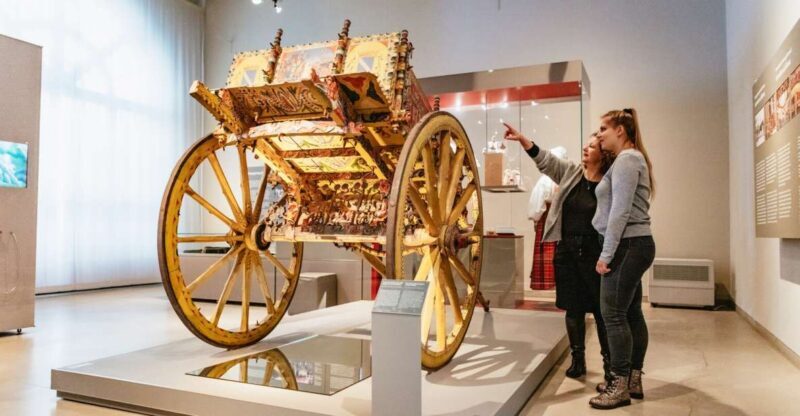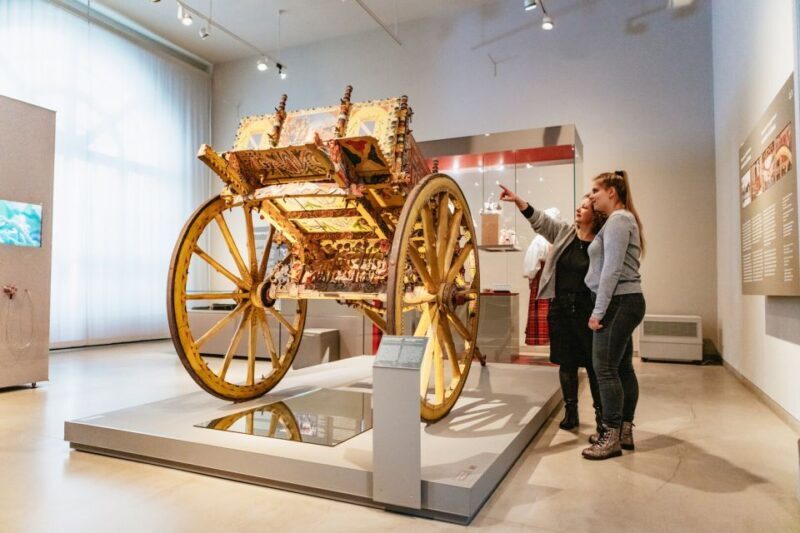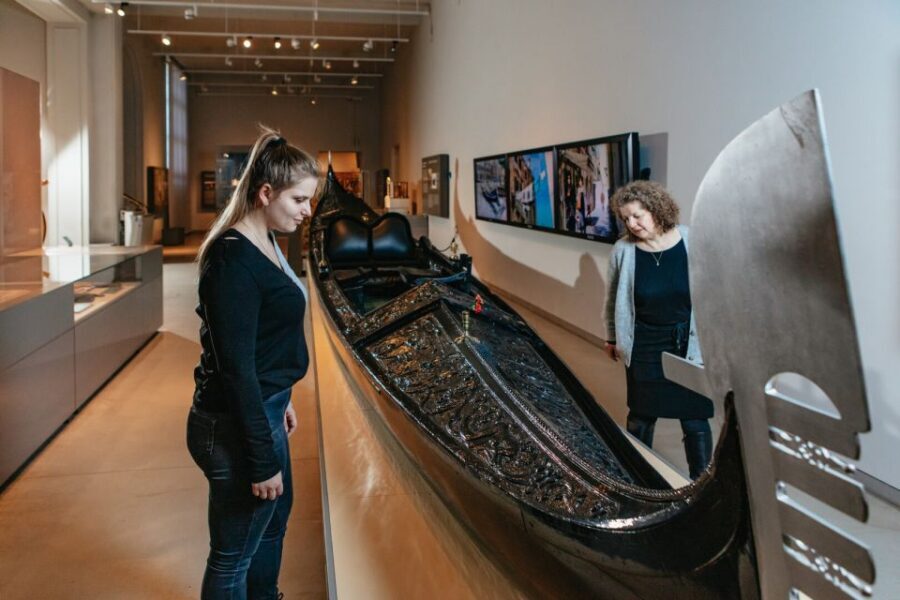Berlin: Museum Europäischer Kulturen Entry Ticket offers a compelling glimpse into the diverse cultural fabric of Europe. For only $11, you gain access to an engaging museum showcasing artifacts that span centuries, from everyday objects to modern-day cultural expressions. Located in Berlin, this museum provides an affordable way to deepen your understanding of European history through art, crafts, and contemporary exhibits.
What we love most is the museum’s focus on cultural contact—it’s not just about static objects but about the stories of people interacting across borders. The permanent exhibition, Cultural Contacts: Living in Europe, offers a collection that highlights the ongoing exchange of ideas and traditions in Europe, making it a vibrant space for any curious traveler. Plus, you’ll appreciate how the museum embodies the lived realities of Europeans, creating a more authentic and relatable experience.
One potential consideration is that backpacks are not allowed, which could be inconvenient if you’re carrying a lot of gear. Also, the museum is not suitable for wheelchair users, so accessibility might be limited for some visitors. The closing times—5:00 PM on weekdays and 6:00 PM on weekends—mean you’ll want to plan your visit accordingly to avoid rushing through exhibits.
This experience is perfect for travelers who enjoy cultural history, artifacts, and contemporary issues reflected through objects. It’s especially suited for those interested in understanding how different European cultures have come into contact and shaped each other’s identities over time. If you’re looking for an authentic taste of European culture with a reasonable price, this museum fits the bill.
Key Points
- Affordable entry at $11 provides great value for exploring European cultural history.
- Focus on “Cultural Contact” explains how Europeans have interacted across borders.
- Diverse collections span from the 18th century to today, offering a broad perspective.
- Accessible for most visitors, but not wheelchair-friendly, and backpacks are not allowed.
- Timings are limited, so plan your visit to fit the closing hours.
- Ideal for history and culture lovers wanting a deeper understanding of Europe’s interconnected past.
A Practical Guide to Visiting the Museum Europäischer Kulturen in Berlin

When considering a visit to the Museum Europäischer Kulturen, you’re stepping into a space that celebrates the interwoven nature of European identities. For most travelers, the museum offers a balanced mix of historical artifacts, contemporary works, and thematic exhibitions, making it an excellent choice for a half-day cultural outing.
Location and Accessibility
Situated within Berlin, the museum is reachable by public transport, though specific details about nearby stations aren’t listed here. The building itself is designed to evoke the diversity of European cultures, with the layout encouraging an organic flow through various thematic sections.
However, be aware that the museum is not suitable for wheelchair users, which may limit access for some visitors. Also, backpacks are not allowed, so plan to carry only essentials in a smaller bag or leave larger luggage behind.
What to Expect Inside
Your entrance ticket grants access to both the permanent exhibitions and possibly some temporary displays, depending on the day. The permanent exhibition, Cultural Contacts, is especially noteworthy, as it highlights the cross-cultural interactions that have shaped Europe. Here, artifacts range from everyday objects to artistic expressions, illustrating how people from different backgrounds have influenced each other.
Expect to see objects that tell stories—some familiar, others surprising. As Liz noted in her review, it’s an “interesting museum,” which suggests that the exhibits are engaging and thought-provoking. The collection is curated to show the continuity and change in European culture, from the 18th century to the present.
Thematic Highlights
- Art and Crafts: You’ll likely see traditional European crafts alongside contemporary pieces, illustrating the evolution of artistic traditions.
- Music and Culinary Artifacts: Expect displays that touch on how music and food reflect cultural identities across borders.
- Contemporary Showcase: The public study and research components bring modern issues into focus, allowing visitors to connect past and present.
Visiting Tips
- Plan ahead for timing, as the museum closes at 5:00 PM on weekdays and 6:00 PM on weekends. Arriving early will give you ample time to explore without feeling rushed.
- Wear comfortable shoes, since exploring multiple exhibitions may involve a fair amount of walking.
- Leave backpacks at home or in a locker, if available, to adhere to the policies.
- Masks are recommended but not mandatory, depending on your comfort level.
Additional Considerations
For just $11, the value is significant—especially if you’re interested in European history from a cultural perspective. The ticket covers admission to the permanent exhibitions, so there’s no surprise extra cost for more displays. It’s a straightforward, budget-friendly way to enrich your stay in Berlin.
However, if you’re a wheelchair user or need accessible facilities, this museum might not meet your needs. Also, for those with large luggage or backpacks, alternative arrangements might be necessary.
What Real Visitors Say
Liz’s brief review describes it as an “interesting museum,” which aligns with the idea that it’s both engaging and educational. Though only five reviews are available, the overall rating of 4.2 out of 5 suggests most visitors find it worthwhile.
The Sum Up: Who Should Visit?

This tour is ideal for history buffs, cultural enthusiasts, and curious travelers eager to explore Europe through objects and stories rather than just landmarks. Its focus on cultural contact over centuries makes it a meaningful stop, especially if you want to understand how borders and identities have evolved. The affordable price and thoughtful exhibits make it a smart addition to your Berlin itinerary, especially if you’re interested in contemporary issues reflected through history.
If you enjoy artifacts that reveal the human side of history—from daily life to cross-cultural exchanges—this museum will resonate with you. However, if accessibility or large luggage are concerns, you’ll want to plan accordingly. Overall, it provides a balanced, authentic experience that enriches your understanding of Europe’s interconnected past.
FAQ

Is the museum suitable for children?
The provided info doesn’t specify age restrictions, but given the focus on cultural artifacts and contemporary issues, it should be suitable for older children interested in history and culture. Smaller children might need supervision to stay engaged.
How long should I plan for my visit?
Since the museum is open until 5:00 PM or 6:00 PM, you might want to set aside at least 1 to 2 hours to explore comfortably.
Can I visit if I only have a few hours?
Absolutely. With a one-day validity on the ticket, even a short visit can be rewarding if you focus on the permanent exhibitions.
Are guided tours available?
The info doesn’t mention guided tours; it’s primarily an entry ticket, so you might explore on your own or look for additional tour options if available.
Is there any discount for students or seniors?
No details are provided about discounts; at $11, it’s already quite affordable.
What should I bring?
Your ticket, a small bag (since backpacks aren’t allowed), and possibly a mask if you prefer to wear one.
Are there any dining options inside?
No mention of a café or restaurant, so plan to eat before or after your visit.
Can I take photos?
The info doesn’t specify, but typically, museums allow photos without flash unless otherwise noted. Check on-site policies for confirmation.
Exploring the Museum Europäischer Kulturen promises a thoughtful look into the stories that connect Europeans across centuries and borders. It’s a modestly priced, well-curated space that rewards those with an interest in understanding the cultural fabric that binds this continent together.
You can check availability for your dates here: